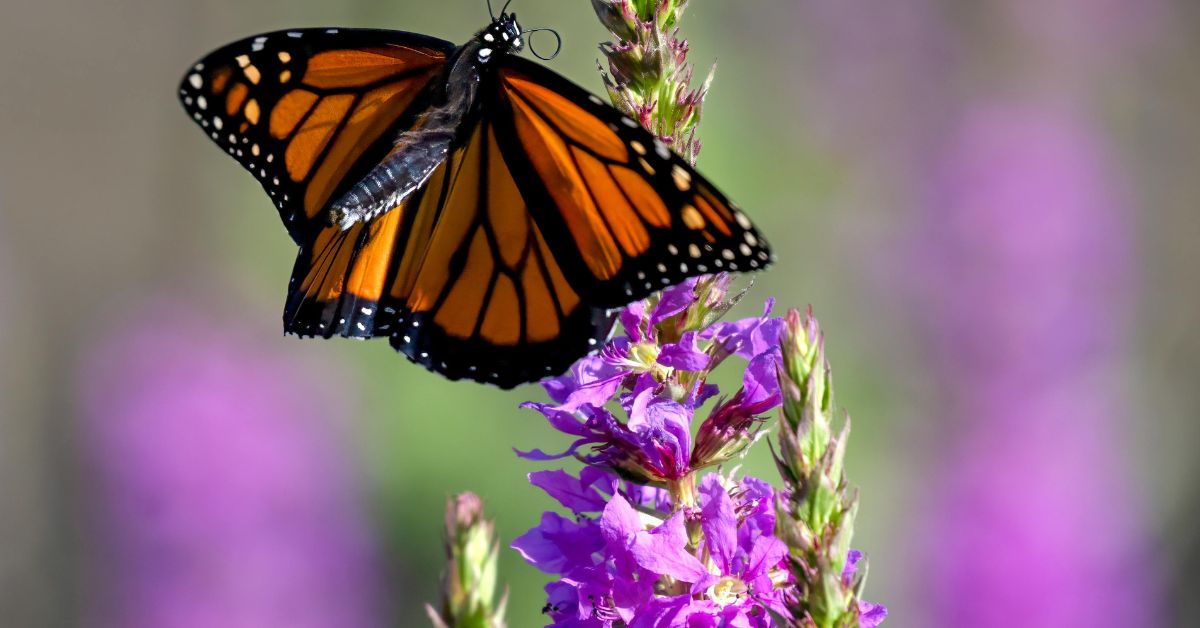Loosestrife, encompassing several species within the genus Lythrum, is a striking plant known for its vibrant purple or pink flowers and hardy nature. The most famous (or infamous) member of this group is purple loosestrife (Lythrum salicaria), a wetland plant native to Europe, Asia, and parts of Africa but now widely established across North America. While loosestrife plant species have aesthetic appeal and ecological significance, they are often the subject of debate due to their dual role in supporting biodiversity in some regions and disrupting ecosystems in others. Known for their adaptability and rapid growth, loosestrife plants occupy a unique environmental niche with notable benefits and potential ecological drawbacks.
This article explores the loosestrife plant’s environmental niche, focusing on its adaptability, ecological impact, interactions with wildlife, and the challenges it poses as an invasive species in non-native regions. We will discuss how it thrives, its ecological roles, and the ongoing conservation efforts aimed at managing its impact while appreciating its contributions to ecosystem diversity.
Understanding the Habitat and Distribution of Loosestrife Plants
Loosestrife species, particularly purple loosestrife, thrive in wetland habitats such as marshes, riverbanks, lake shores, and ditches. These plants are adapted to moist, nutrient-rich soils and can withstand periods of standing water, making them ideal for wetland ecosystems. Although native to Eurasia, purple loosestrife and several other loosestrife species have spread widely across North America, where they have established themselves as dominant species in some regions.
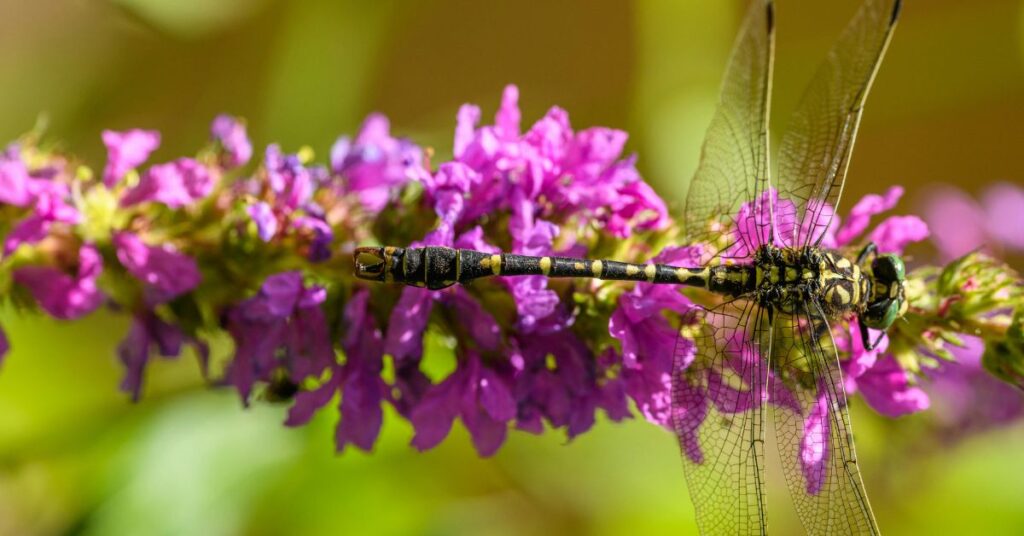
1. Native Range and Introduction to North America
Purple loosestrife plant has a long history in its native range, covering parts of Europe, Asia, and northern Africa, where it coexists with local plant species and contributes to wetland biodiversity. In the early 19th century, loosestrife was introduced to North America, possibly as an ornamental plant and for its medicinal uses. Since then, it has rapidly expanded across North America, primarily due to its ability to produce a large number of seeds and adapt to various environmental conditions.
The plant’s aggressive growth and reproduction enable it to colonize wetlands quickly, often outcompeting native plants and altering habitat structure. As a result, it has spread across much of the United States and Canada, where it is now listed as an invasive species.
2. Preferred Habitat Conditions
Loosestrife plants are generally found in wetland ecosystems, where the soil is moist and rich in nutrients. These plants are particularly well-suited to areas with fluctuating water levels, as they are able to thrive in both shallow water and moist, low-oxygen soils. This adaptability allows them to establish themselves in environments where few other plants can survive, giving them a competitive advantage in colonizing new areas.
The dense root systems of loosestrife plants enable them to anchor themselves in soft, muddy substrates, while their tall, rigid stems allow them to compete effectively for sunlight. By forming dense stands, loosestrife plants can dominate large areas of wetland, creating a thick mat of vegetation that limits the growth of other plants.
Ecological Role and Benefits of Loosestrife in Native Habitats
In its native Eurasian range, loosestrife plant plays an important ecological role, contributing to biodiversity, supporting pollinators, and promoting wetland health. The plant has developed coevolutionary relationships with native wildlife, including insects, birds, and other wetland organisms, contributing to a balanced ecosystem.
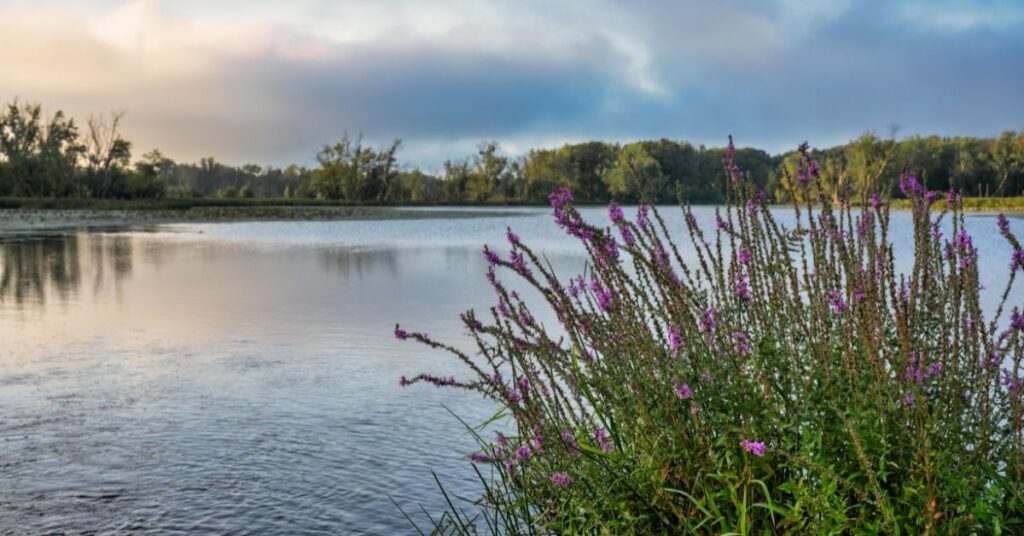
1. Supporting Pollinators and Biodiversity
Loosestrife’s tall spikes of purple flowers attract a variety of pollinators, including bees, butterflies, and flies. These insects are drawn to the plant’s abundant nectar, which provides a valuable food source during the summer months. By supporting pollinators, loosestrife indirectly benefits other plants in the ecosystem, facilitating pollination and promoting genetic diversity within plant communities.
In addition to attracting pollinators, loosestrife provides habitat for a variety of small animals, such as amphibians and insects, which rely on wetland vegetation for shelter and breeding grounds. The dense foliage of loosestrife offers protection from predators, while its root system helps stabilize the soil, creating microhabitats that support wetland biodiversity.
2. Erosion Control and Water Quality
The extensive root system of loosestrife plants helps stabilize wetland soil, reducing erosion along riverbanks and shorelines. This stabilizing effect is particularly beneficial in wetlands where water levels fluctuate, as it helps prevent soil from washing away during periods of high water flow. By reducing erosion, loosestrife also contributes to water quality, as sedimentation is minimized, and nutrients remain within the soil rather than washing into waterways.
Additionally, the presence of loosestrife can enhance soil structure by trapping organic matter, which enriches the soil and supports nutrient cycling. In its native habitats, loosestrife plays a role in maintaining the health of wetland ecosystems, promoting plant growth and supporting diverse wildlife populations.
The Invasive Impact of Loosestrife in Non-Native Habitats
While loosestrife has ecological benefits in its native range, its introduction to North America has created significant challenges for native ecosystems. The plant’s aggressive growth and reproductive capabilities have allowed it to spread rapidly, outcompeting native vegetation and altering the structure of wetland habitats.
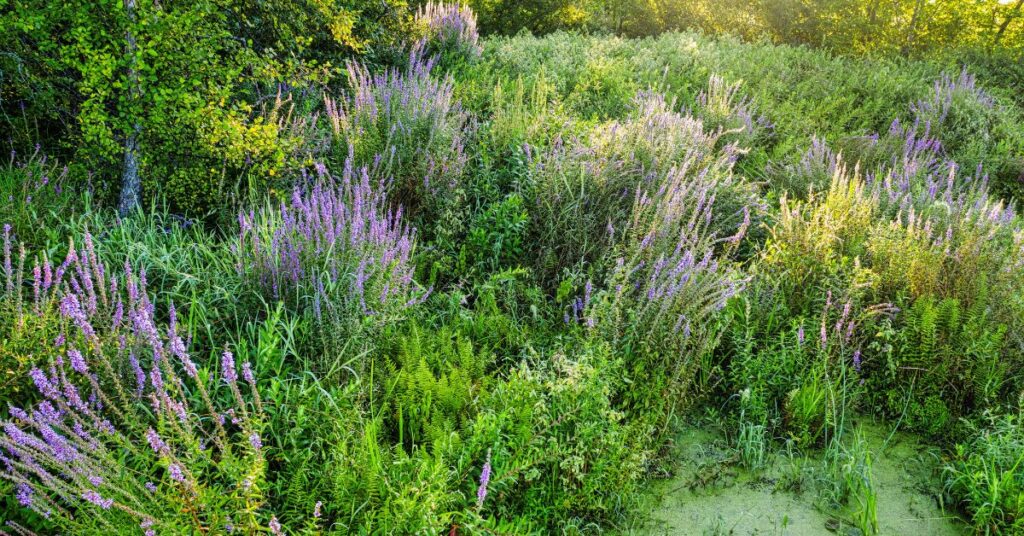
1. Competition with Native Plants
One of the most significant ecological impacts of loosestrife plant in North America is its ability to outcompete native wetland plants. Loosestrife’s dense growth and large flower spikes create a canopy that limits sunlight for other plants, while its extensive root system monopolizes soil nutrients and water. This competitive edge often leads to the displacement of native vegetation, reducing plant diversity and altering the composition of wetland communities.
The displacement of native plants affects the entire ecosystem, as native species of fish, birds, and insects often rely on specific plants for food and habitat. By replacing native vegetation, loosestrife disrupts these ecological relationships, creating ripple effects that impact the entire food web.
2. Reduced Habitat Quality for Wildlife
As loosestrife spreads, it alters the structure and quality of wetland habitats, reducing the availability of suitable nesting and foraging sites for wildlife. Many bird species, for example, rely on native plants that provide food and shelter, but loosestrife’s dense stands offer limited resources for these animals. Similarly, amphibians and fish, which depend on open water and diverse plant communities, may be negatively affected by the presence of loosestrife, as it reduces the open spaces and variety of vegetation they need to thrive.
The presence of loosestrife also affects insects that have specialized relationships with native plants. For example, monarch butterflies rely on milkweed for reproduction, but the displacement of milkweed by loosestrife can reduce available habitat for these butterflies, contributing to their decline.
Adaptations and Reproductive Strategies of Loosestrife plant
Loosestrife’s ability to thrive and spread rapidly is due to its numerous adaptations and reproductive strategies, which allow it to compete effectively in wetland environments. These adaptations have contributed to its success as both a native and invasive species.
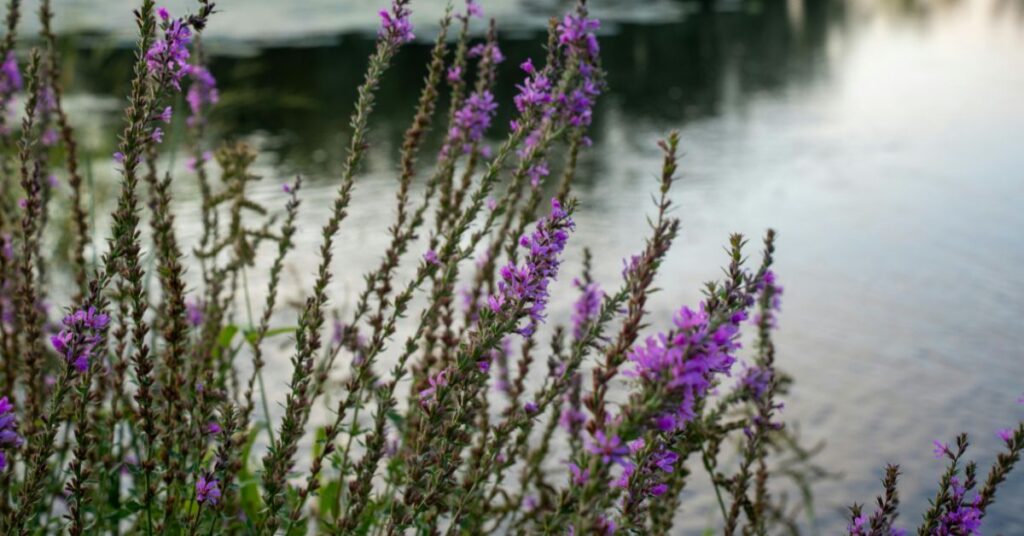
1. Reproductive Flexibility and Seed Production
Loosestrife is a prolific seed producer, with a single plant capable of generating up to three million seeds per year. These seeds are small, lightweight, and highly buoyant, allowing them to be easily dispersed by water and wind. The seeds remain viable for extended periods, enabling them to germinate in favorable conditions, even years after they are dispersed. This reproductive strategy allows loosestrife plant to colonize new areas quickly and recover from disturbances.
In addition to seed production, loosestrife plant can reproduce vegetatively through its root system. The plant’s roots are capable of producing new shoots, allowing it to spread laterally and form dense stands. This combination of sexual and asexual reproduction gives loosestrife a significant advantage over native plants, enabling it to dominate wetland habitats.
2. Adaptation to Varied Water Conditions
Loosestrife is well adapted to fluctuating water levels, an essential trait for survival in wetland habitats. The plant can tolerate both standing water and dry conditions, allowing it to thrive in areas where water levels change seasonally or due to rainfall. Its roots can survive periods of inundation, while its stems and leaves are adapted to withstand dry spells, making it highly resilient in the face of environmental variability.
This adaptability allows loosestrife to colonize a wide range of wetland environments, from riverbanks to marshes, where it can establish itself in areas that other plants might find inhospitable.
Management and Control of Loosestrife plant in Invasive Regions
Given the impact of loosestrife on native ecosystems, various control and management strategies have been developed to limit its spread and mitigate its ecological effects in North America. Effective management requires a combination of approaches, including biological, mechanical, and chemical methods, to ensure long-term control and the restoration of native vegetation.
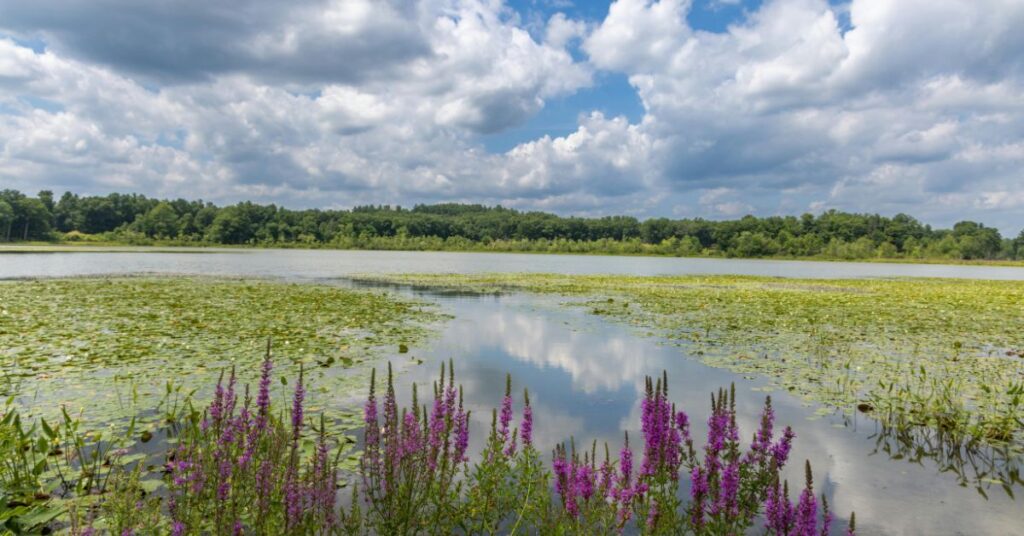
1. Biological Control
Biological control has emerged as one of the most effective and environmentally friendly methods for managing loosestrife populations. This approach involves the introduction of natural predators, such as beetles and weevils, that feed exclusively on loosestrife plant and help reduce its growth and reproduction. Two species of beetles, Galerucella calmariensis and Galerucella pusilla, have been successfully used in North America to control loosestrife populations. These beetles feed on loosestrife leaves and flowers, reducing the plant’s ability to produce seeds and weakening its growth.
Biological control offers a long-term solution for managing loosestrife, as these introduced insects can establish populations that regulate loosestrife growth over time. However, biological control requires careful monitoring to ensure that introduced species do not negatively impact native flora and fauna.
2. Mechanical Removal
Mechanical removal involves physically removing loosestrife plants from infested areas, typically through cutting, mowing, or hand-pulling. This method can be effective in small infestations but is labor-intensive and often impractical for large-scale management. Removing loosestrife plant manually can help reduce seed production and prevent further spread, but it requires repeated efforts, as the plant can regrow from root fragments.
In addition to cutting and pulling, some management efforts use controlled burning to remove loosestrife plants and stimulate the growth of native vegetation. While effective, burning requires careful planning to avoid damaging surrounding habitats and can only be used under specific environmental conditions.
3. Chemical Control
Chemical control, involving the use of herbicides, can be an effective way to manage loosestrife plant infestations. Herbicides are applied directly to loosestrife plants, killing them and reducing their impact on native vegetation. However, chemical control can have negative environmental consequences, as herbicides may affect non-target plants and contaminate water sources.
For this reason, chemical control is often used as a last resort or in combination with other management methods, such as biological control and mechanical removal. By integrating multiple control strategies, land managers can achieve more sustainable and environmentally friendly results.
The Future of Loosestrife Management and Conservation
While loosestrife plant is a valuable species in its native habitat, its invasive impact in North America requires ongoing management and research to balance its ecological role with the need to protect native ecosystems. The future of loosestrife management will likely involve a combination of innovative techniques, increased public awareness, and habitat restoration to ensure that native plants and wildlife have the space they need to thrive.
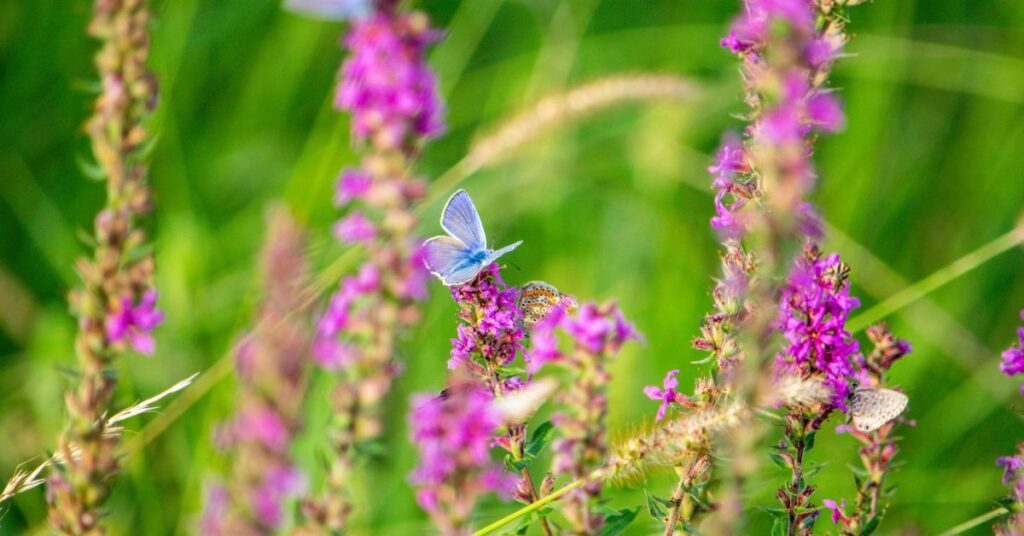
Efforts to manage loosestrife are increasingly focused on preserving the ecological balance in wetlands, where native plants support complex ecosystems that are essential for biodiversity, water quality, and flood control. By restoring these ecosystems, conservationists hope to create habitats that are resilient to invasive species and support diverse, healthy communities of plants and animals.
Conclusion
The loosestrife plant occupies a unique niche in wetland ecosystems, where it contributes to biodiversity and soil stabilization in its native habitats. However, its role as an invasive species in North America poses significant challenges to wetland ecosystems, as it outcompetes native plants and disrupts habitat structure. Through a combination of biological, mechanical, and chemical control methods, conservationists are working to manage loosestrife populations and restore native vegetation in affected areas.
The ongoing management of loosestrife highlights the complexity of balancing ecological roles and the challenges of dealing with invasive species. As we continue to understand and address the environmental impacts of loosestrife, we move closer to creating resilient, diverse ecosystems that can withstand the pressures of invasive plants and support the richness of native biodiversity.
FAQs
1. What makes loosestrife invasive in North America?
Loosestrife is invasive in North America due to its aggressive growth, high seed production, and adaptability, allowing it to outcompete native plants and dominate wetlands.
2. What are the ecological impacts of purple loosestrife?
Purple loosestrife displaces native plants, reduces biodiversity, and disrupts habitats, affecting wildlife that depends on native vegetation for food and shelter.
3. How is loosestrife managed in non-native regions?
Loosestrife is managed using biological control (e.g., beetles), mechanical removal, and chemical herbicides, often in combination to achieve sustainable control.
4. Does loosestrife have any ecological benefits?
In its native range, loosestrife supports pollinators, contributes to biodiversity, and helps prevent soil erosion, demonstrating its ecological value in balanced ecosystems.
5. Can loosestrife be used in ornamental gardening?
Due to its invasive nature, loosestrife is generally discouraged in ornamental gardening in North America to prevent accidental spread to wild habitats.
6. What other plants can replace loosestrife in wetland restoration projects?
Native wetland plants like cattails, blue flag iris, and swamp milkweed are recommended as alternatives to loosestrife in restoration projects, as they support biodiversity and prevent erosion.
Read More: Types of Wildflowers: An In-Depth Exploration of Their Environmental Niche

